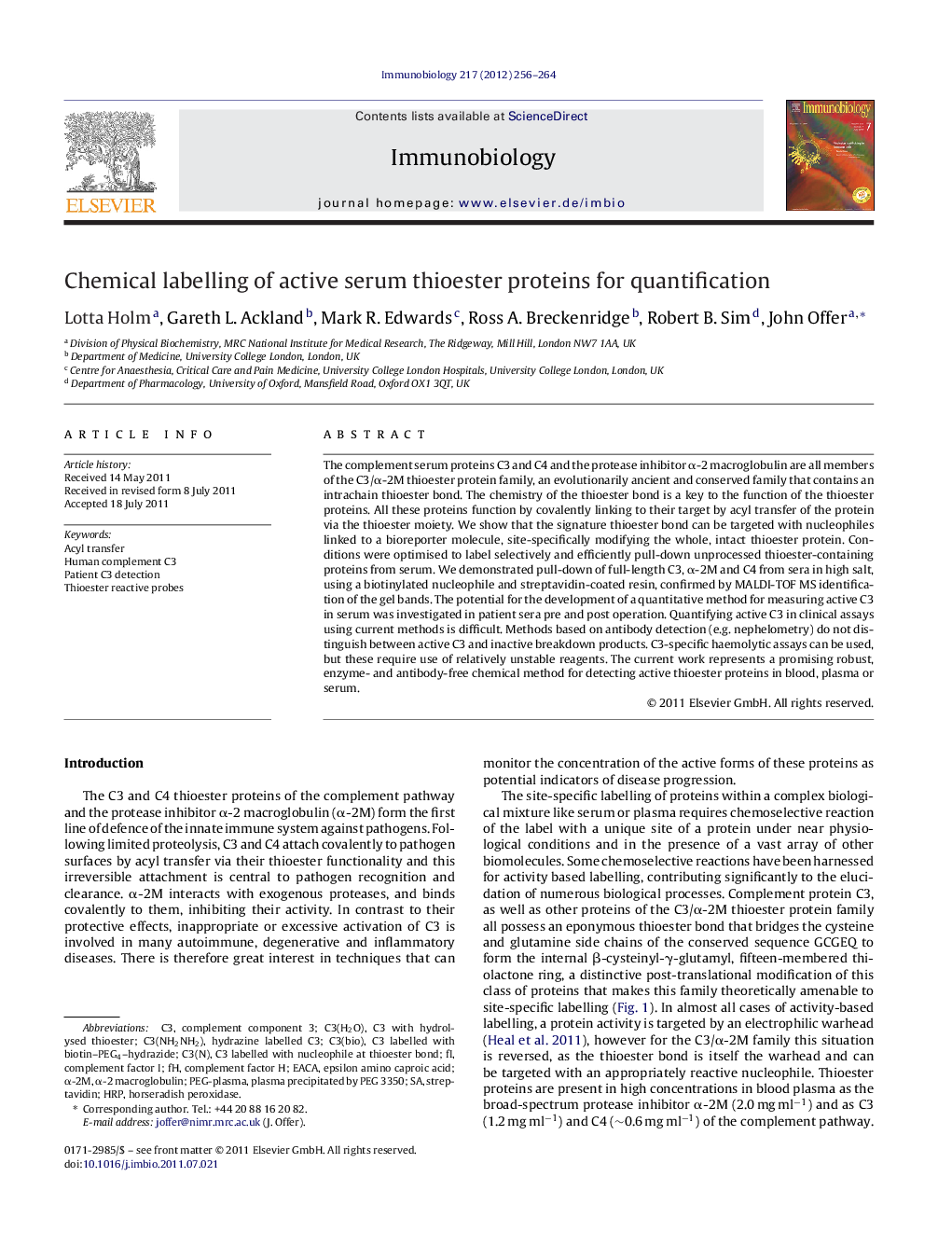| Article ID | Journal | Published Year | Pages | File Type |
|---|---|---|---|---|
| 10941101 | Immunobiology | 2012 | 9 Pages |
Abstract
The complement serum proteins C3 and C4 and the protease inhibitor α-2 macroglobulin are all members of the C3/α-2M thioester protein family, an evolutionarily ancient and conserved family that contains an intrachain thioester bond. The chemistry of the thioester bond is a key to the function of the thioester proteins. All these proteins function by covalently linking to their target by acyl transfer of the protein via the thioester moiety. We show that the signature thioester bond can be targeted with nucleophiles linked to a bioreporter molecule, site-specifically modifying the whole, intact thioester protein. Conditions were optimised to label selectively and efficiently pull-down unprocessed thioester-containing proteins from serum. We demonstrated pull-down of full-length C3, α-2M and C4 from sera in high salt, using a biotinylated nucleophile and streptavidin-coated resin, confirmed by MALDI-TOF MS identification of the gel bands. The potential for the development of a quantitative method for measuring active C3 in serum was investigated in patient sera pre and post operation. Quantifying active C3 in clinical assays using current methods is difficult. Methods based on antibody detection (e.g. nephelometry) do not distinguish between active C3 and inactive breakdown products. C3-specific haemolytic assays can be used, but these require use of relatively unstable reagents. The current work represents a promising robust, enzyme- and antibody-free chemical method for detecting active thioester proteins in blood, plasma or serum.
Keywords
Related Topics
Life Sciences
Biochemistry, Genetics and Molecular Biology
Cell Biology
Authors
Lotta Holm, Gareth L. Ackland, Mark R. Edwards, Ross A. Breckenridge, Robert B. Sim, John Offer,
